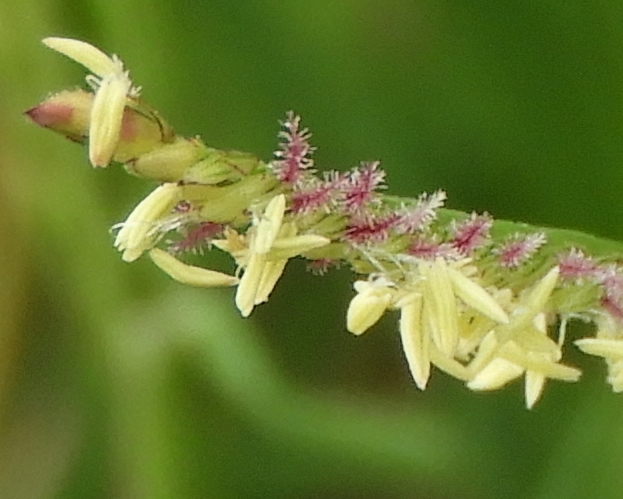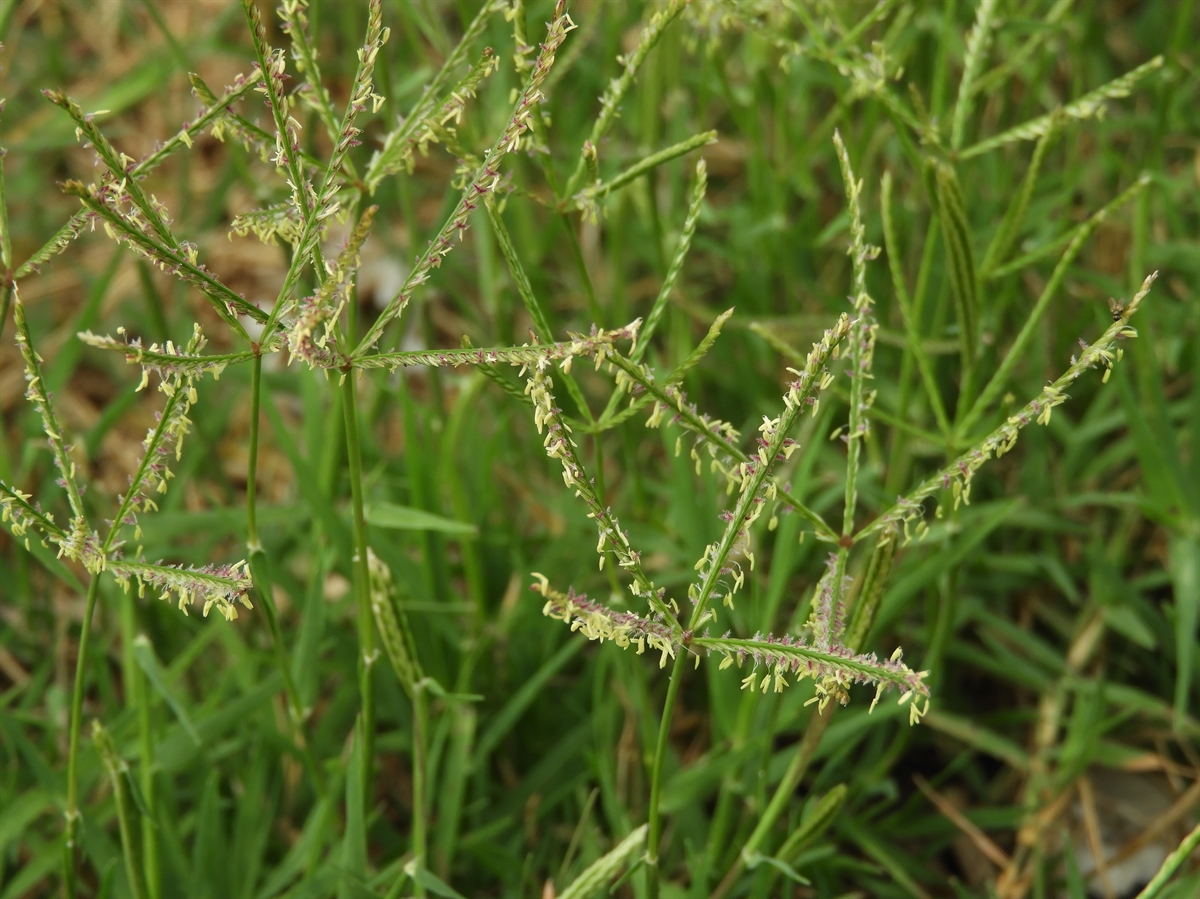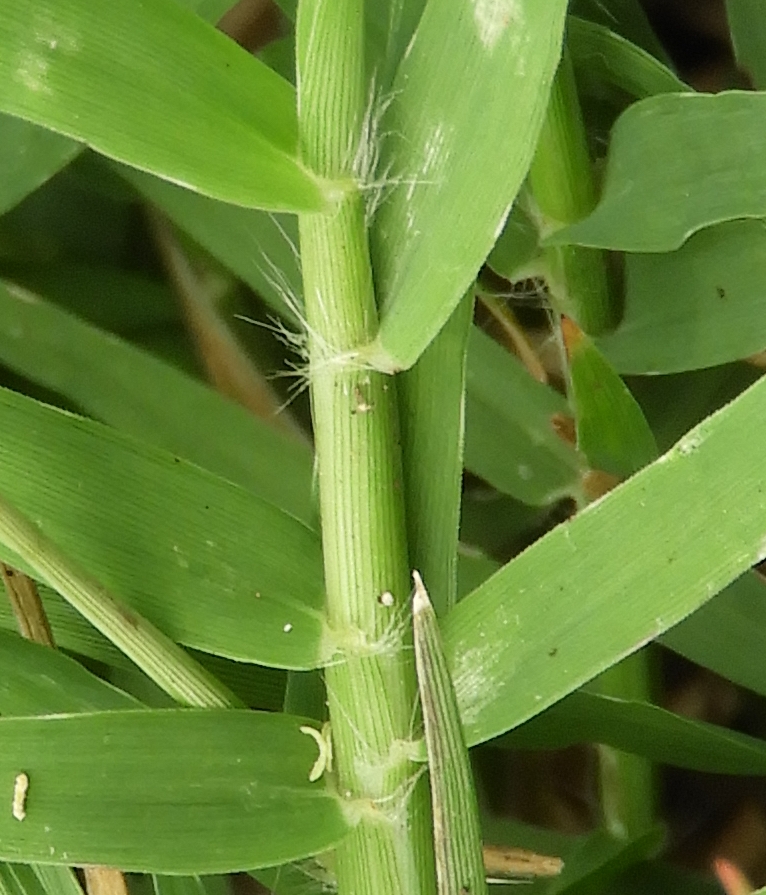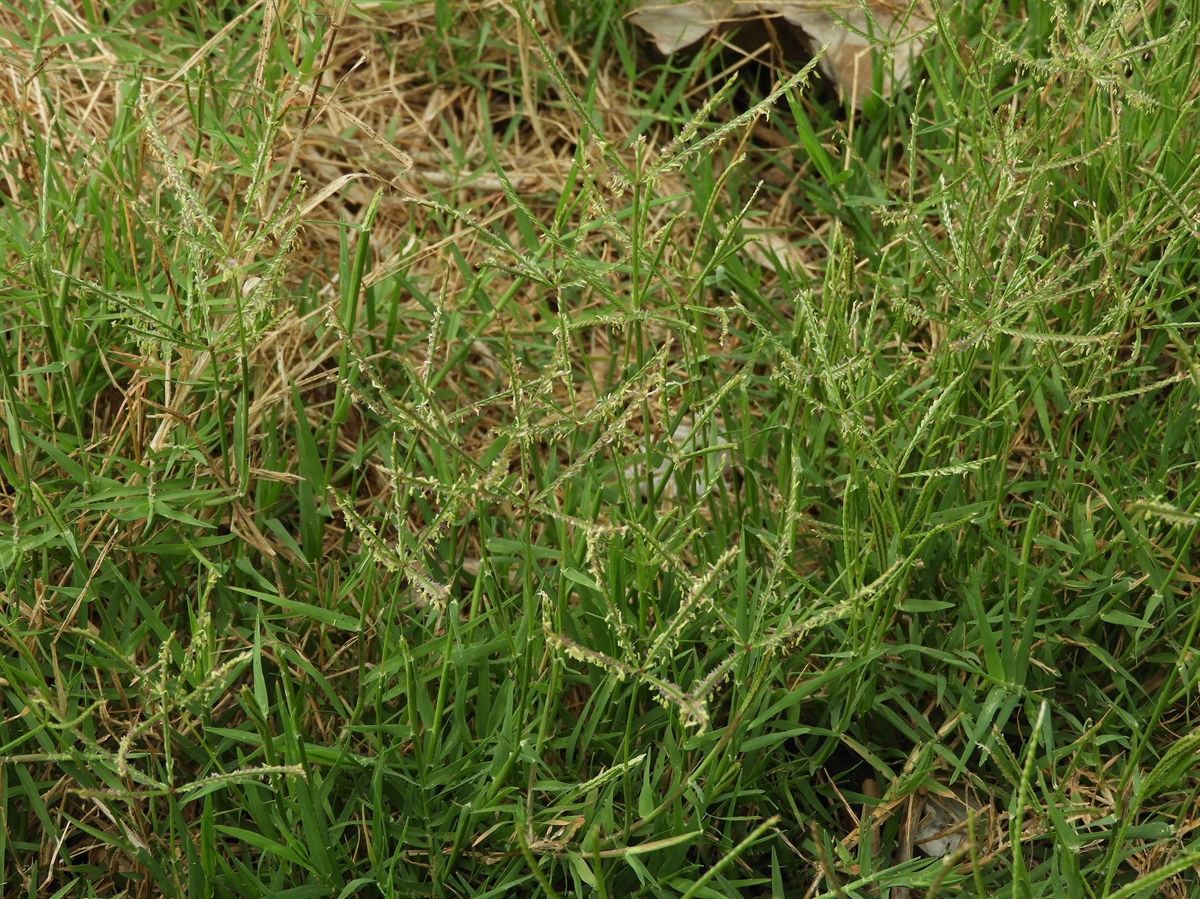Habit: Cynodon dactylon grows both by stolons and rhizomes rooting at nodes forming large mats. Upright branches to 50 cm in height. The leaves are arranged alternately to 10 cm in length (usually shorter) with a basal sheath extending along the stem. At the point of divergence of the leaf sheath to the leaf blade is a small dense fringe of cilia forming the ligule. The leaves are parallel veined.
The zygomorphic flowers are arranged in a 4-5 digitate panicle of racemes each up to 5 cm in length and made of appressed spikelets. At the base of each spikelet are 2 yellow brown, ciliate structures called glumes. In each spikelet there are flowering structures each is subtended by 2 additional ciliate edged structures (lemma and palea). There is 1 fertile floret with 1 stamen and a superior ovary each with a single locule and seed. The fruit is a caryopsis.
Habitat: Cynodon dactylon grows in Human Altered environments (yards).
Distribution: Cynodon dactylon is NOT native to the Lucayan Archipelago but is widespread throughout the islands. It is native to the Africa, Asia, Pacific, Europe and Australia and now throughout North, Central, and South America.
Medicinal/Cultural/Economic usage: Cynodon dactylon is not known to be used medicinally in the Lucayan Archipelago.
It is cultivated for lawn grass.




